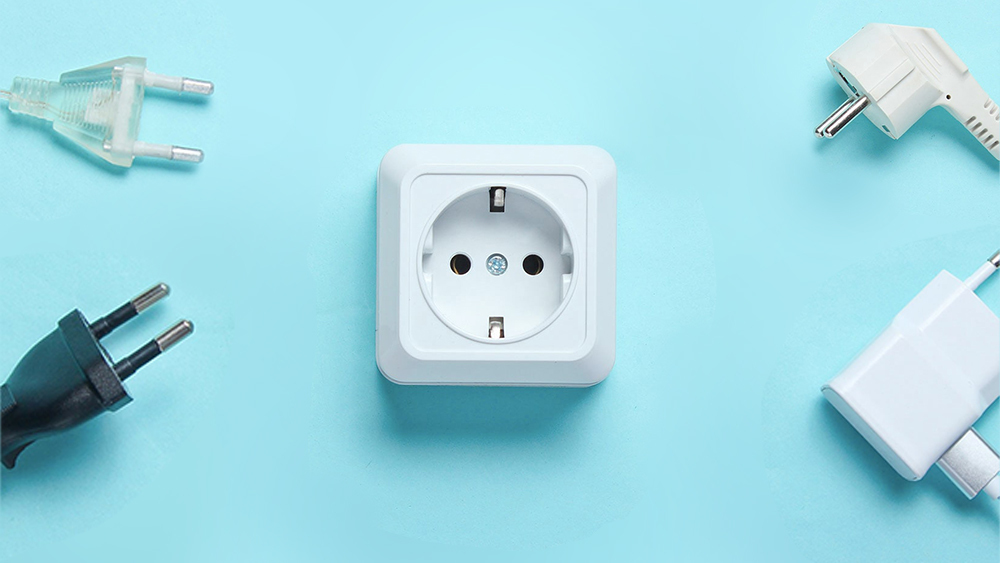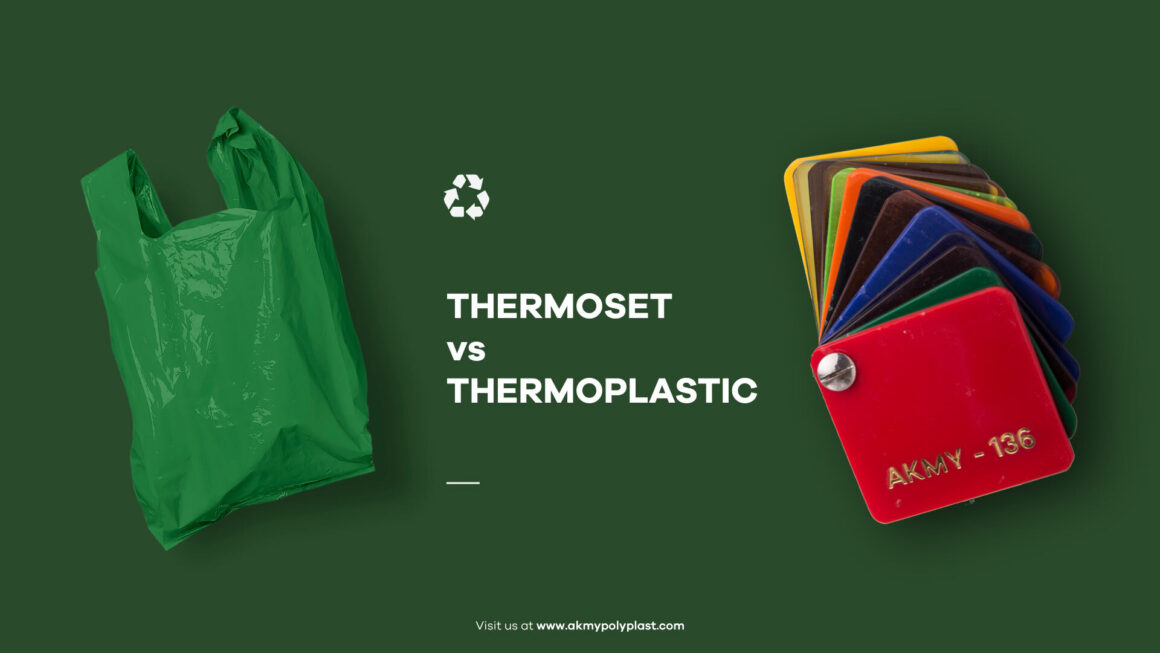Thermoset and Thermoplastics are two forms of polymer powders, which are differentiated based on their behavior and application when reacting to the application of heat.
Introduction—Thermoset vs Thermoplastic
The primary difference between the two is that when heated, Thermoset hardens but cannot be remolded or heated again after the first forming. In contrast, thermoplastics may be warmed, remolded, and cooled as required without generating any chemical changes. This is the major difference between the two materials.
Physical and chemical differences between thermoplastics and thermosets result in lower melting points and higher temperatures. Each of these thermosetting polymers will be discussed in this article, with a synopsis of the advantages and disadvantages of each.
Thermoplastic is considered a recyclable plastic material, which is good for the environment and the earth.
What is Thermoset Plastics?
Materials made of plastic are now widely employed in everyday items, from your keyboard to the International Space Station. Plastics can build basic objects like pens, but how can they achieve the complexity necessary to survive extreme heat and corrosion? The solution is thermosetting or thermosetting polymers.

Applications of Thermosetting Plastics
- Thermal stability, chemical resistance, and structural integrity are all combined in Thermoset polymers to provide a high-performance material.
- The outstanding chemical and thermal stability and the materials’ exceptional strength, hardness, and moldability make Thermoset components widely employed across various sectors, including automotive, appliance, electrical, lighting, and energy.
- With their cheap cost and versatility, thermoset plastic composites can suit the requirements of many different manufacturing materials. Using them, many tiny and big components may be produced in enormous quantities while still being repeatable from batch to batch. Metal fabrication or the usage of thermoplastics may not produce intricate and geometric designs. However, thermosets may be made in a mold.
Pros and Cons of Thermoset Materials
| Thermoset Pros | Thermoset Cons |
|---|---|
| More Resistant against high temperature | Cannot be recycled. |
| Hard and rigid | Much more difficult to surface finish. |
| Excellent aesthetics finishes | Cannot be remolded or reshaped. |
| High mechanical property | Poor thermal conductivity for housing replacements. |
| Cost-effective | The rigidity of the material can result in product failure when used in high vibration applications. |
| Excellent dimensional stability |
Materials and Types of Thermosets
The plastics manufacturing sector uses a wide range of thermosetting polymers made from various materials. Both RIM and Resin Transfer Molding are thermoset molding compound methods (RTM).
Second phase components may be scattered, fibrous, or continuous in a thermoset composite material matrix. A catalyst or hardener is included in casting resins. Potting and encapsulating compounds, conductive adhesives, and dielectric sealants all employ Thermoset electrical resins and electronic-grade materials.
For example, a thermal compound may be applied to a substrate to provide a thermally conductive layer between components or a final product. Between runs of various colors or compositions, molds are cleaned using thermoset purging agents. When bonding or sealing two surfaces, it is necessary to fill in any gaps or spaces between them using a gap filler product. The following kinds of thermoset materials are often used in the plastics manufacturing industry:
RIM Thermosetting Plastics:
- Polythene
- Thermal Plastics: RIM Thermosetting
- pDCPD (Polydicyclopentadiene)
- Polyurethanes
- Polyureas
- Engineered Foams
Fiberglass-reinforced RTM Thermosetting Plastics:
- · Polyester
- · Ester of Vinyl
- · Polyimides
Have questions about our plastic?
If you’re a distributor, fabricator, designer, we’d love to hear from you. You can WhatsApp us at +91 9643322315 for immediate assistance.
Looking for a specific sheet or polymer? View Our Catalog
What are Thermoplastics?
Plastics, as described previously, are commonly accepted as real-world applications of chemistry. Plastics are utilized in various applications, from containers, bottles, and medical gadgets to aircraft components. Recyclability and adaptability have made thermoplastic polymers one of the most popular plastics on the market. Repeating components called monomers join together into chains or branches to produce thermoplastic polymers.
When heated, thermoplastic pellets soften and become more pliable. Because there is no chemical bonding, the curing process is completely reversible. These thermoplastics may be remolded and recycled without changing their physical qualities because of this feature. For the most part, the thermoplastic resins typically utilized in the construction industry have high strength, low shrinkage, and easy flexibility.
For low-stress applications like plastic bags, thermoplastics may be utilized. For high-stress mechanical components, thermoplastics can be employed. Polyethylene, PVC, and nylon are all examples of thermoplastic polymers.

Applications of Thermoplastic
Due to contemporary cities’ acidic and filthy nature, steel pipe systems are susceptible to corrosion and need particular measures to prevent rust. Protecting steel pipe systems exposed to these extreme conditions may cost a significant amount of money.
The use of thermoplastics is thought to be a more cost-effective alternative. Thermoplastics have several qualities that make them potential substitutes for other materials:
- Their resistance to acidic materials and corrosive conditions.
- Having the ability to transport very hot or cold (hot or cold).
- Their versatility in fluid conveyance means they can handle just about any job.
PVC and CPVC are two of the most common materials utilized to make these pipes. Polypropylene, PVDF, ABS, nylon, and polyethylene are only some of the other materials used to construct the product. Natural gas is transported in polyethylene gas tanks for home and business consumption.
High-pressure polyethylene is another frequent thermoplastic used for encasing stiff things like electrical equipment. For insulating electrical wires, low-pressure polyethylene is a great choice. Most people identify Polyamide with rope and belt manufacturing.
Pros and Cons of Thermoplastic Materials
| Thermoplastic Pros | Thermoplastic Cons |
|---|---|
| Extremely adhesive to metal | May soften when reheated |
| High recyclable | |
| Superb impact resistance | |
| Can be remolded and reshaped | |
| Excellent corrosion resistance | |
| Slip enhancement | |
| Detergent and chemical resistance | Can be more expensive than thermoset |
| Flexibility and elongation of the coating film | |
| Electrical insulation | |
| Chip resistance | |
| Aesthetically-superior finishes | |
| Superb corrosion resistance |
Thermoplastics: Advantages and Disadvantages
- The versatility of thermoplastics is unquestionably one of their greatest assets. High strength, lightweight, and cheap production costs characterize thermoplastics. As a result, thermoplastic components may be produced in large quantities and with great accuracy.
- There is a major drawback to employing thermoplastics instead of metals: they melt at lower temperatures. Several kinds of low-quality thermoplastics may melt when exposed to light for a long time. Thermoplastics may also be sensitive to organic solvents, hydrocarbons, and other highly polar solvents, making them less desirable for industrial use.
- Creep, which happens when a material expands and weakens under long-term stress loads, affects thermoplastics. The lower melting point of the material makes it more susceptible to creep. High-stress circumstances may cause deformation in certain thermoplastics but a fracture in others, such as composites.
Various Thermoplastic Components
These include polyethylene (PE), polyvinyl chloride (PVC), and polystyrene (PS), which are often used for packaging. Acrylics, fluoropolymers, polyesters, polyimides, and nylons are all other types of thermoplastics. Multiple reshapings are possible with each of these kinds of metal. For example, foam cups, which are thermoplastics, may be remelted and shaped into dishes.
The following are some of the most often seen thermoplastics:
- Polycarbonate
- Polyoxymethylene Acetal Copolymers
- Acetal Polyoxymethylene Homopolymer
- Acrylic
- Nylon
- Polyethylene
- Polypropylene
- Polystyrene
- Polyethylene terephthalate (PVC)
- Teflon
Thermoset vs Thermoplastic – A Summary
Thermosetting plastics are polymers that cannot be deformed on heating or remolded into a new shape, mostly useless after use. That is why Akmy Polyplast delivers the best thermoplastic material in the Indian polymer industry. All our products are best in class, and from concept to creation, we deliver quality, utility, and immense value. AKMY Thermoplastics are available in a variety of material alternatives and may be used for a variety of applications as long as the material’s limits are unlikely to cause product failure under the specified operating conditions. The fundamental characteristics of AKMY Thermoplastic materials remain the same: great adaptability and recyclability.


